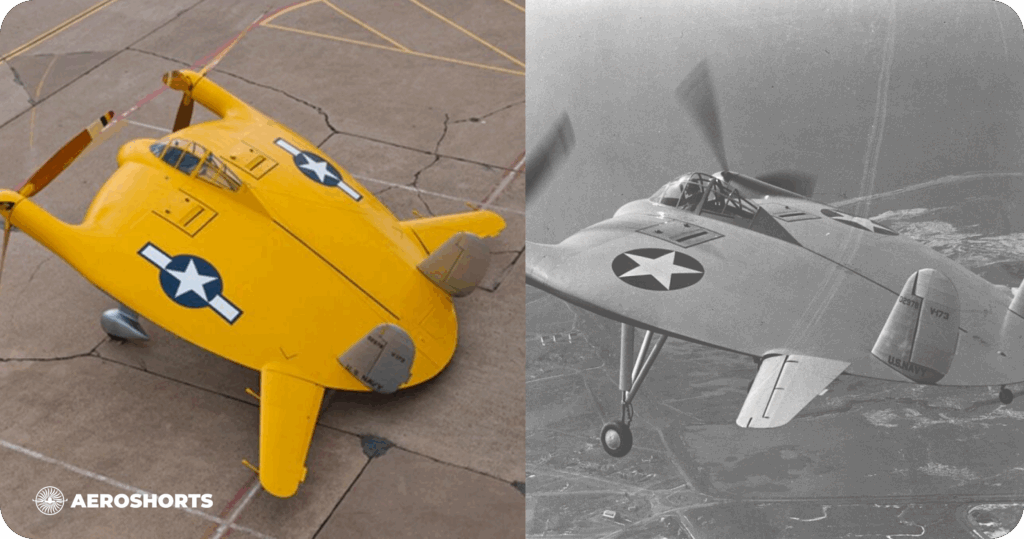Imagine a plane that looked less like an aircraft and more like a giant frisbee or, dare we say, a UFO. Well, in the 1940s, such a machine actually took to the skies! This is the incredible story of the Vought V-173, affectionately nicknamed the “Flying Pancake.” It might seem like something out of a science fiction movie, but this experimental aircraft was a very real, albeit unconventional, attempt to push the boundaries of flight.
A Radical Design for a Bold Purpose
The Vought V-173 was born out of a very specific need from the U.S. Navy. They were looking for a fighter jet that could achieve something revolutionary: incredibly short takeoffs and landings. The goal was to create an aircraft capable of operating from small aircraft carriers, which would offer immense strategic advantages.
To achieve this, engineers at Vought came up with a truly radical design: a circular, disc-shaped body. The idea was that this unique shape would provide extreme lift, allowing the aircraft to get airborne quickly and land gently. It was a bold vision, aiming to redefine what an airplane could look like and how it could perform.

Why This Pancake Couldn’t Quite Fly Straight
While the “Flying Pancake” was a fascinating concept, it faced some significant hurdles that ultimately prevented it from ever going into full production.
Firstly, despite its ability to fly at very slow speeds, its unusual circular shape made it quite unstable at high speeds. This was a critical flaw for a fighter jet, which needed to be agile and fast.
Secondly, the aircraft was powered by two large propellers, which, while providing thrust, also caused dangerous vibrations during flight. These vibrations were not only uncomfortable but also posed a safety risk.
Finally, and perhaps most crucially, the world of aviation was on the cusp of a major revolution. As the V-173 was undergoing its tests, jet engines were rapidly emerging as the future of aircraft propulsion. These powerful new engines quickly made propeller-driven fighters, no matter how innovative, seem obsolete.
A Legacy That Soared Beyond Failure
So, the Vought V-173 “Flying Pancake” never became a mainstream aircraft. It didn’t win any wars or carry passengers across continents. However, its story is far from a complete failure.
Despite its shortcomings, the “Flying Pancake” proved a vital point: unconventional designs could indeed work. It demonstrated that thinking outside the traditional “tube and wing” box was possible and could yield valuable insights. The lessons learned from its development, even from its failures, played an important role in pushing aviation boundaries. Some of its underlying ideas, such as achieving vertical takeoff and landing (VTOL) capabilities and improving aerodynamics, influenced future aircraft designs.
The “Flying Pancake” remains a testament to human ingenuity and the relentless pursuit of innovation in aviation. It reminds us that sometimes, even the strangest ideas can teach us something valuable and pave the way for future breakthroughs.



